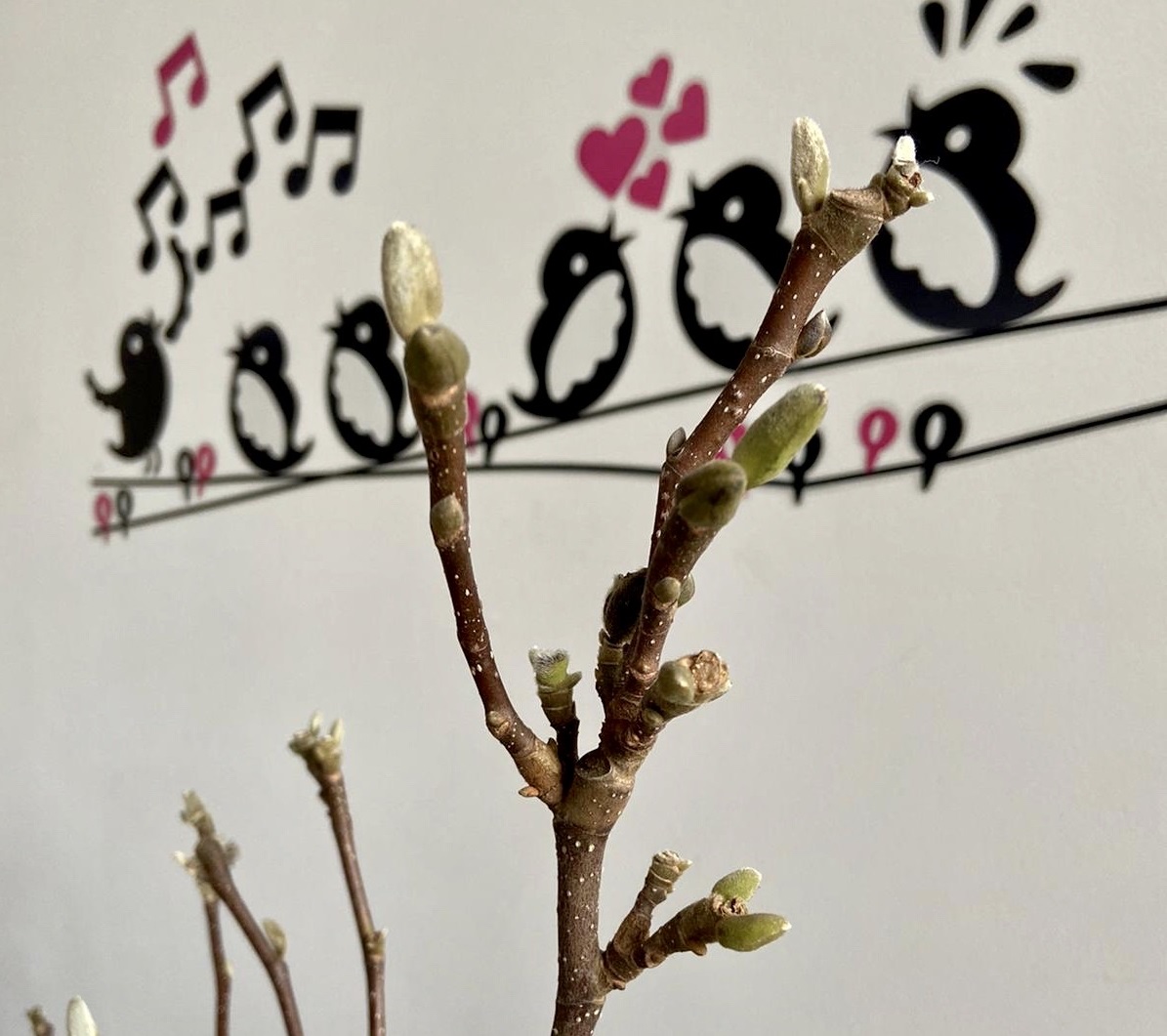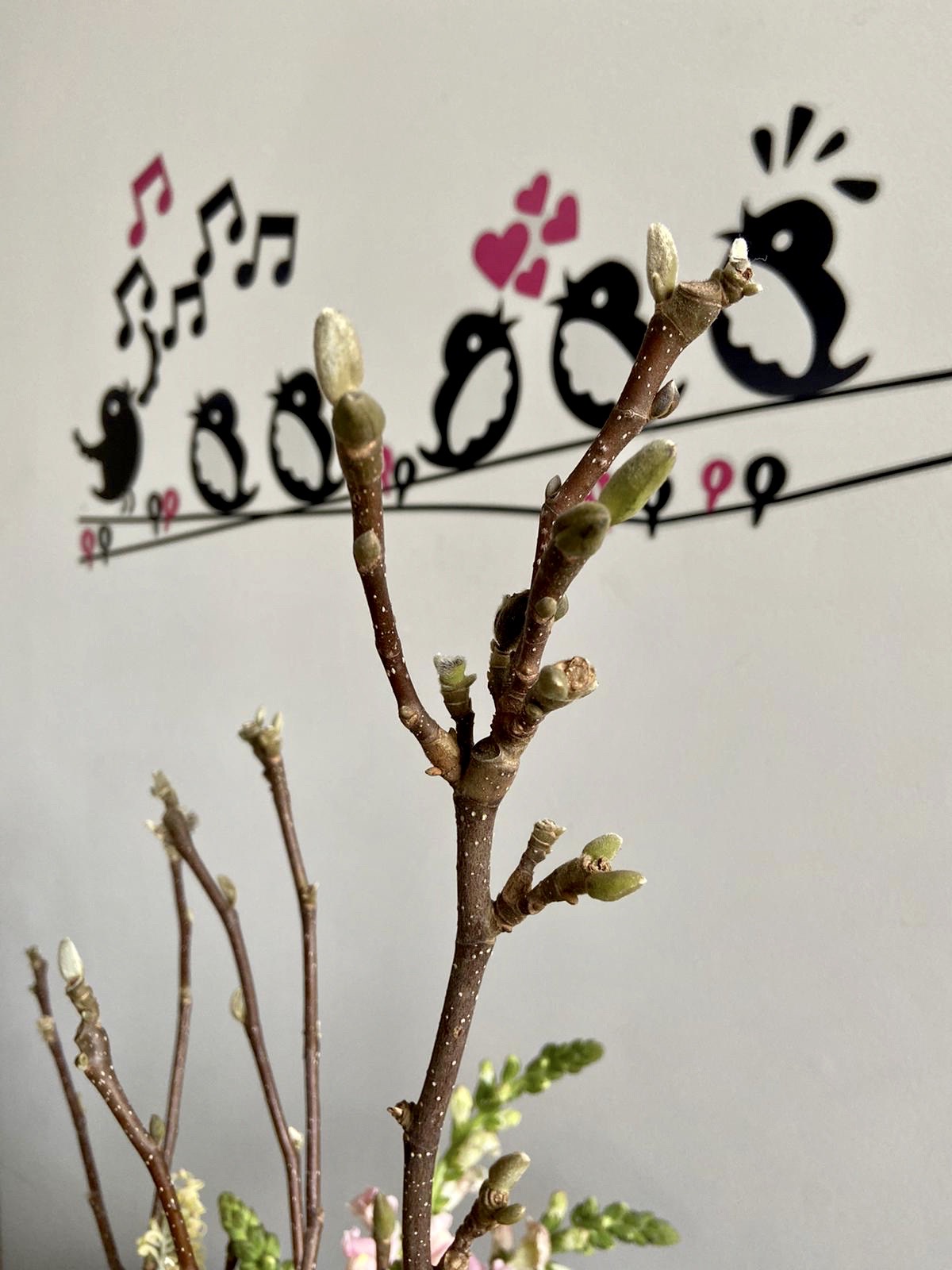
Meihua Figures of Hope
Jamie Wang

I sent a friend a bouquet this morning. Like many others in Melbourne, she has been under some form of lockdown for most of the year (2020). There are always some lively indoor plants in her apartment. Yet the vibrantly coloured assemblage of blossoms, leaves and stems seemed to have brightened the room in a different, even if a slightly fragile way. In particular, we were both delighted by the inclusion of magnolias. Their dark green branches, strong, tenacious and proud, fuzzy buds, and soft flower petals reminded us so much of plum trees (Prunus mume). Plum blossoms/meihua is one of the most loved and deeply admired flowers in many parts of Asia. Its ability to power through winter and to then bloom in early Spring, sometimes among snow and ice, is associated with hope and perseverance. Across Asia, it is customary to have meihua at home during Lunar new year as they embody the changing of seasons and inspire imagining the possibilities of life anew.
In the past years, reports are emerging on the impact of climate change on cherry blossoms. Although the timing of plum blossoms is not as carefully monitored, I wonder how their alignment with seasons might have also shifted. For many of us who have long seen meihua’s simultaneous tenderness and strength as figures of hope, what might the shift or perhaps the disappearance of its blooming altogether entail? But for now, these meihua in spirit, magnolia in form, is already doing its anticipatory work. In the southern hemisphere, the spring equinox is just around the corner.


Author bio: Jamie is a researcher in urban environment humanities who is interested in collaborative and sustainable story-making towards the opening of other kinds of possible futures.
t:@jamieyingwang